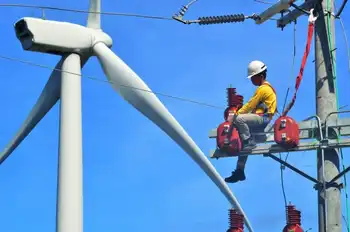Eight coal plants slated for construction
By St. Louis Today
Substation Relay Protection Training
Our customized live online or in‑person group training can be delivered to your staff at your location.

- Live Online
- 12 hours Instructor-led
- Group Training Available
The Natural Resources Defense Council released its rankings on the heels of an announcement by the U.S. Environmental Protection Agency that it plans to inspect ponds where coal ash is stored and order repairs if needed.
The move is the first step in the federal regulation of the waste, which has come under renewed scrutiny following the December collapse of a containment pond in Kingston, Tenn., which sent more than a billion gallons of coal sludge into a nearby valley, damaging homes and tainting local water supplies.
Texas led the "Filthy Fifteen" ranking with 4 million tons of coal combustion waste. Missouri came in 12th while Illinois was sixth. The rankings were based on projected waste from about 80 proposed coal-fired power plants with permit applications on file.
The projected 1.3 million tons of waste from Missouri and Illinois represent 7 percent of all coal ash expected from new power plants nationwide.
"Coal waste poses a large and unnecessary risk to people's health and environment, and we need to act before another Kingston disaster strikes," said Peter Lehner, executive director of the Natural Resources Defense Council.
Despite growing concern about the risk from coal combustion waste, there are no national standards for its storage and disposal. The EPA does not consider the waste "hazardous" even though it contains harmful metals such as lead and arsenic.
But under the direction of new EPA Administrator Lisa Jackson, agency officials recently notified utilities operating nine plants in Missouri and 11 in Illinois that it needed information about the structural integrity of the coal ash storage ponds. Among some of the companies notified were: Ameren Corp., Dynegy Inc., Associated Electric Cooperative Inc. and Great Plains Energy, the parent company of Kansas City Power and Light.
"I anticipate we'll be looking at every site," said David Bryan, a spokesman for EPA's regional office in Kansas City.
Existing coal plants produce about 130 million tons of combustion waste each year, according to industry estimates. In its analysis, the Natural Resources Defense Council estimates new coal-fired power plants would add about 18 million tons to that amount, which includes 18,000 tons of toxic metals.
Ameren's existing coal-fired power plants produce about 2 million tons of coal ash each year. In addition to storing that waste on-site, the utility also recycles the ash, using it in products like concrete, roofing shingles and road material. Last year, company officials say they recycled more ash waste than they produced.
Susan Gallagher, an Ameren spokeswoman, said the utility has already began working to comply with the EPA's request.
"We support the agency's request to fully collect information about these facilities so the agency can use that information should they decide to develop additional regulations related to these sites," Gallagher said. "We are preparing our response, although the 10-business-day timeline is a tight one."
While there are no federal standards in place for the disposal of coal combustion waste, states do have a hodgepodge of rules that address the issue. Those rules vary wildly from state to state — some do little other than require companies to obtain discharge permits while others establish rigorous water monitoring rules.
Both Missouri and Illinois scrutinize the ponds and landfills where coal ash waste is stored, but many older structures lack liners that would protect pollution from leaching into groundwater and migrating into drinking water sources.
Illinois did not require ponds to be lined until 1989, after state environmental regulators discovered pollution seeping from the Havana, Hennepin and Wood River plants, which were owned by Illinois Power at the time.
Despite the requirements, there are no regulations in Illinois for how frequently groundwater near the old, unlined ash ponds must be monitored. Each site is monitored on a "case-by-case" basis, state regulators say.
Ameren officials say they test groundwater near their ash ponds weekly.
Similarly, the company routinely monitors the structural integrity of the impoundments, they say. Those efforts were beefed up after the company implemented its dam safety program following the collapse of the Taum Sauk reservoir.
In addition to power plants, paper mills, chemical manufacturers and food processing plants also generate coal ash. The EPA estimates non-utility sources are responsible for producing about 6 million tons of coal ash each year.











